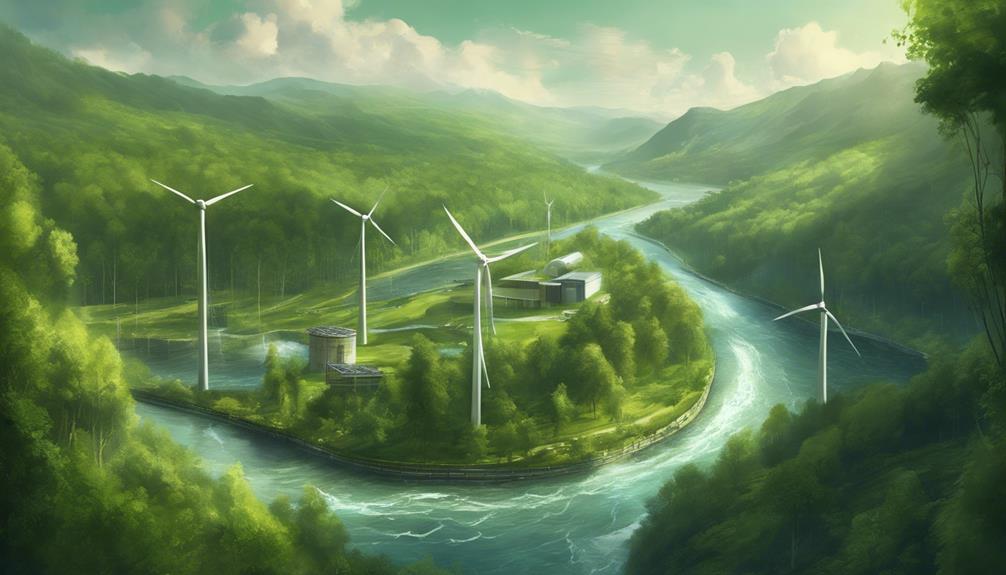Renewable resources, a cornerstone of sustainable energy, hold the promise of a cleaner, greener future. With a focus on harnessing natural elements like sunlight, wind, and water, these resources offer a viable alternative to traditional fossil fuels. As we navigate the shifting landscape of energy production, understanding the intricacies and potential of renewable resources becomes paramount. Their impact on the environment, economy, and global energy security is profound, prompting a deeper exploration into their capabilities and limitations.
Key Takeaways
- Renewable resources are sustainable elements replenishing themselves, crucial for reducing emissions and fostering economic growth.
- Solar, wind, hydropower, geothermal, and biomass are key types of renewable resources for energy production.
- Benefits include combating climate change, ensuring reliable energy, and promoting sustainability through various renewable technologies.
- Government incentives, educational programs, RPS, and outreach initiatives drive the adoption of renewable resources for a greener future.
Definition of Renewable Resources

Renewable resources, also known as sustainable energy sources, are natural elements that have the capacity to replenish themselves over time, distinguishing them from finite, non-renewable resources. These resources, such as sunlight, wind, water, geothermal heat, and biomass, provide sustainable alternatives for energy production without being depleted. Solar energy, wind power, hydropower, geothermal energy, and biofuels are examples of renewable resources that are harnessed for various energy production needs.
The significance of renewable resources lies in their ability to reduce greenhouse gas emissions and mitigate the environmental impact associated with traditional energy sources. By utilizing renewable resources, societies can move towards a cleaner and more sustainable energy future. The increasing global demand for renewable resources reflects a growing recognition of their role in providing a long-term solution to energy requirements while minimizing harm to the environment. Embracing renewable resources is not only crucial for meeting current energy needs but also for ensuring a greener and more environmentally conscious tomorrow.
Importance of Sustainability
Ensuring the sustainability of resources is paramount in establishing a resilient foundation for future generations' energy needs and environmental well-being. Sustainable practices play a crucial role in shaping a better future by addressing key issues such as carbon emissions reduction, energy independence, ecosystem protection, and job creation.
- Carbon Emissions Reduction: Renewable resources help combat climate change by providing cleaner energy alternatives, reducing the reliance on fossil fuels, and subsequently lowering carbon emissions.
- Energy Independence: Utilizing renewable resources promotes energy security and independence, reducing the vulnerability to geopolitical tensions and ensuring a stable energy supply for communities.
- Ecosystem Protection: Sustainable practices with renewable resources are essential for safeguarding ecosystems and preserving biodiversity, mitigating the negative impacts of resource extraction and pollution on the environment.
- Job Creation: Investing in renewable resources fosters economic growth by creating opportunities in green industries, leading to job creation and a more sustainable workforce for the future.
Types of Renewable Resources
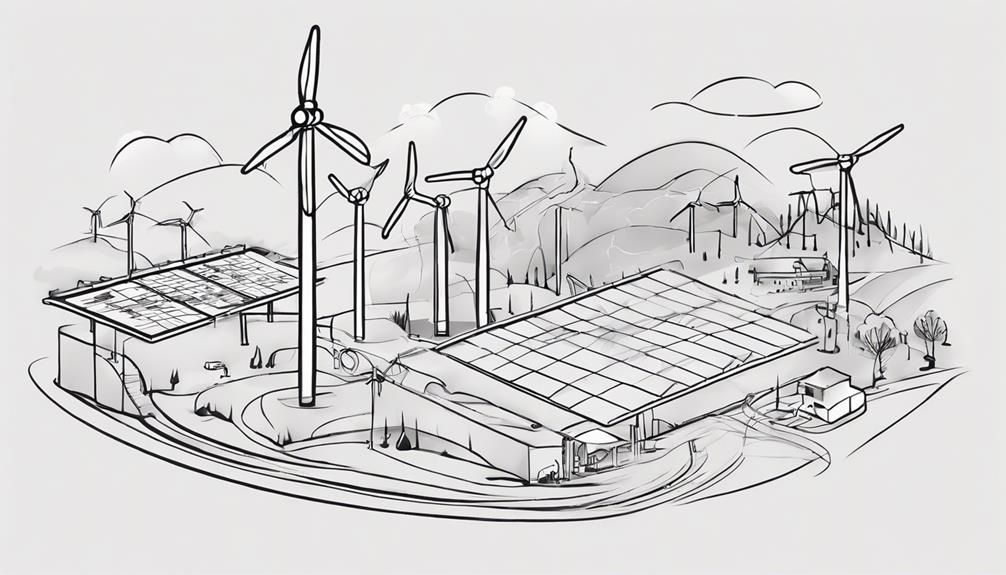
The various types of renewable resources play a critical role in diversifying our energy sources and reducing our dependence on non-renewable fossil fuels. Solar energy is a prominent renewable resource that utilizes photovoltaic cells to convert sunlight into electricity. Wind energy, another key player in the renewable energy sector, is harvested through wind turbines to generate power efficiently. Hydropower, derived from the energy of flowing water, provides a significant source of renewable energy worldwide. Geothermal energy taps into the earth's heat from its core for both heating and electricity generation, offering a reliable renewable energy option. Biomass energy, derived from organic materials like wood and ethanol, is a versatile renewable resource for energy production. By harnessing these diverse forms of renewable resources such as solar energy, wind energy, hydropower, geothermal energy, and biomass energy, we can move towards a more sustainable and environmentally friendly energy landscape.
Solar Energy Overview
Solar energy, derived from the sun's radiation, holds immense potential as a sustainable source of power. The efficiency of solar panels in converting sunlight into electricity has significantly improved over the years. Understanding the benefits of solar panels and the overall efficiency of solar energy systems is crucial in harnessing this renewable resource for various applications.
Solar Panels Benefits
How does the conversion of sunlight into electricity through photovoltaic cells benefit the renewable energy landscape? Solar panels, a renewable resource, offer numerous advantages:
- Abundant Availability: Solar energy is plentiful and accessible in most regions.
- Reduced Reliance: Solar panels decrease dependence on nonrenewable energy sources like coal and oil.
- Cost-Effectiveness: The cost of solar panels has notably declined over the last decade, making them a more affordable option for clean energy.
- Long Lifespan: With a lifespan of around 30 years, solar panels represent a durable and long-term investment in sustainable electricity generation.
Efficiency of Solar
Efficiency in harnessing solar energy plays a pivotal role in optimizing renewable energy systems for sustainable power generation. Solar energy is a versatile and abundant renewable resource that offers various benefits, including providing heat, cooling, lighting, electricity, and fuels. Solar panels have become more cost-effective over the last decade, with a typical lifespan of around 30 years. The interception rate of solar energy is approximately 10,000 times greater than human energy consumption, highlighting its immense potential as a clean energy source. By maximizing the efficiency of solar energy technologies, we can harness this abundant resource more effectively to meet our energy needs while reducing our dependence on fossil fuels.
| Solar Energy Facts | |
|---|---|
| Interception Rate | 10,000 times greater |
| Energy Applications | Heat, cooling, lighting, electricity, fuels |
| Cost of Solar Panels | Decreased significantly |
| Lifespan of Solar Panels | Approximately 30 years |
| Renewable Resource Potential | Versatile and abundant |
Wind Energy Overview
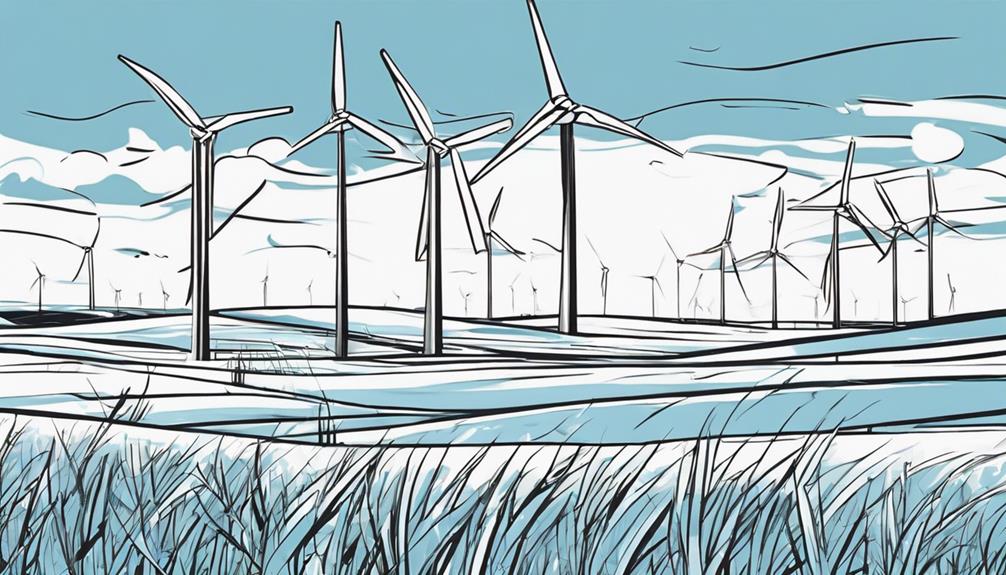
Wind energy, generated through the utilization of wind turbines, plays a pivotal role in the global shift towards sustainable and renewable power sources. Harnessing the kinetic energy of moving air, wind turbines have become a key player in the production of renewable electricity, particularly in leading countries like the UK and US. The process involves the conversion of the kinetic energy captured by the spinning blades of wind turbines into electric energy, which is then integrated into the national grid for distribution. Both onshore and offshore wind farms contribute significantly to the generation of renewable energy, with offshore wind energy holding vast potential for further expansion and efficiency improvements. The continuous advancements in wind turbine technology and the increasing focus on offshore wind projects highlight the growing importance of wind energy in meeting the world's energy demands sustainably and reducing reliance on fossil fuels.
Geothermal Energy Overview
Geothermal energy offers a sustainable and reliable source of power by harnessing the Earth's core heat. With applications in both heating and electricity generation, geothermal technology is known for its efficiency. Different types of geothermal reservoirs, containing fluids of varying temperatures, play a crucial role in the generation of electricity.
Geothermal Energy Benefits
Harnessing the Earth's natural heat from its core, geothermal energy stands out as a reliable and sustainable source of power generation for various applications. Geothermal energy offers numerous benefits, including:
- Reliability: It provides a consistent and uninterrupted source of energy production.
- Versatility: Geothermal energy can be utilized for both heating and electricity generation.
- Sustainability: It is considered a sustainable and environmentally friendly energy source, producing low levels of greenhouse gas emissions.
- Resource Availability: Different types of geothermal reservoirs with varying temperatures exist, allowing for the tapping of this energy source in various regions.
Geothermal Power Generation
Utilizing Earth's natural heat reservoirs, the process of extracting geothermal energy for power generation has proven to be a sustainable and efficient method. Geothermal power plants tap into the heat energy from beneath the Earth's surface to produce electricity and provide heating for various applications. This renewable and sustainable form of energy is harnessed through mature and reliable technologies, making it a dependable source of power. Geothermal reservoirs, containing hot water or steam, are utilized in these power plants to generate electricity continuously. The table below highlights some key aspects of geothermal power generation:
| Aspect | Description |
|---|---|
| Energy Source | Heat from Earth's core |
| Sustainability | Renewable and sustainable |
| Functionality | Provides electricity and heating to residential and industrial areas |
Hydropower Overview

Hydropower, as the predominant source of renewable energy in the electricity sector, plays a crucial role in sustainable energy production globally. Hydropower harnesses the energy of flowing water to generate electricity, making it a clean and renewable energy source with minimal greenhouse gas emissions. Here are key points to consider about hydropower:
- Hydropower is the largest source of renewable energy in the electricity sector, providing a significant portion of the world's electricity supply.
- The stability of hydropower generation relies on consistent rainfall patterns, which can impact the predictability of energy output.
- The infrastructure associated with hydropower, such as dams and reservoirs, can have both positive and negative effects on ecosystems and habitats.
- Hydropower includes various types of plants, including reservoir and run-of-river facilities, each with distinct characteristics and impacts on the environment.
Ocean Energy Overview
Ocean energy represents a promising avenue for renewable energy generation through mechanisms such as tidal power and wave energy extraction. Tidal power generation involves capturing the energy from the rise and fall of tides, while wave energy potential harnesses the power of ocean waves. These methods hold great potential for sustainable energy production and signify a significant step towards reducing dependence on fossil fuels.
Tidal Power Generation
Harnessing the kinetic energy of ocean tides, tidal power generation involves the construction of tidal barrages or tidal turbines in coastal regions with strong tidal currents. This renewable energy source offers a predictable and reliable energy output due to the cyclical nature of tides. Key points to note about tidal power generation include:
- Tidal power utilizes the natural ebb and flow of ocean tides to generate electricity.
- Tidal barrages act as dams, capturing water during high tides and releasing it through turbines during low tides.
- Tidal turbines operate similarly to wind turbines but are driven by underwater currents.
- The development of tidal power projects is gaining momentum globally, with countries like the UK and France leading the way in implementing large-scale initiatives.
Wave Energy Potential
Exploring the vast potential of wave energy as a promising renewable resource involves innovative technologies designed to capture and convert the kinetic power of ocean waves into electricity. Wave energy, a form of ocean energy, holds significant promise for sustainable electricity generation. Prototype wave energy devices are currently in development to harness the power of ocean waves efficiently. The theoretical capacity of wave energy surpasses current global energy demands, indicating its potential as a substantial contributor to the renewable energy mix. While still in the early stages of technological advancement, wave energy offers a greener alternative to traditional fossil fuel-based electricity generation methods. By tapping into the immense power of ocean waves, wave energy can play a crucial role in our transition towards a more sustainable energy future.
| Wave Energy Potential | |
|---|---|
| Renewable Resource | Sustainable |
| Ocean Waves | Electricity |
| Generation | Wave Energy |
Bioenergy Overview
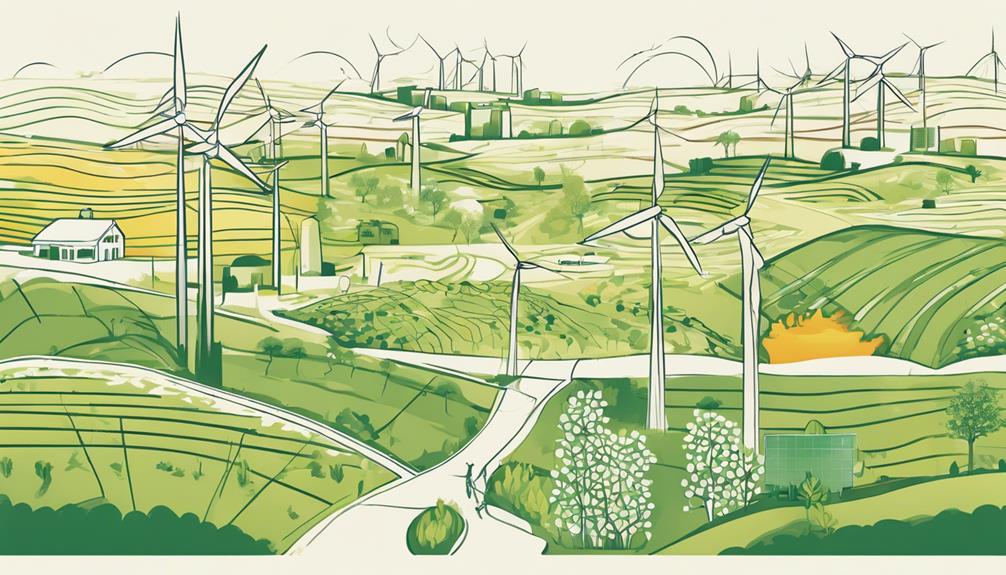
Bioenergy, derived from the combustion of organic matter such as plants, timber, and food waste, is a crucial component of renewable energy production, contributing significantly to sustainability and reduced greenhouse gas emissions. Bioenergy harnesses the power of organic materials to generate energy through combustion. Here are some key points to understand bioenergy:
- Bioenergy is generated by burning organic matter like plants, timber, and food waste.
- Biomass fuels used in bioenergy can be regrown, making them renewable energy sources.
- The emission of CO2 from bioenergy is balanced by carbon absorption during plant growth.
- Bioenergy plays a vital role in sustainable energy production and reducing greenhouse gas emissions.
Renewable Vs. Non-Renewable Resources
Renewable and non-renewable resources are fundamentally distinguished by their ability to naturally replenish over time or their finite nature, respectively. Renewable resources, such as sun, wind, water, geothermal, and biomass, play a vital role in sustainable energy production and reducing greenhouse gas emissions. On the other hand, non-renewable resources like coal, natural gas, and oil are finite in amount and take significant time to form. When comparing the two types of resources, renewable sources are more environmentally friendly as they produce minimal to no harmful emissions, unlike non-renewable sources that emit greenhouse gases like CO2 when burned for energy. Governments worldwide are increasingly focusing on developing renewable energy sources to achieve sustainability goals and reduce reliance on non-renewable resources.
| Renewable Resources | Non-Renewable Resources |
|---|---|
| Sun | Coal |
| Wind | Natural Gas |
| Water | Oil |
| Geothermal |
Incentives for Renewable Resource Use
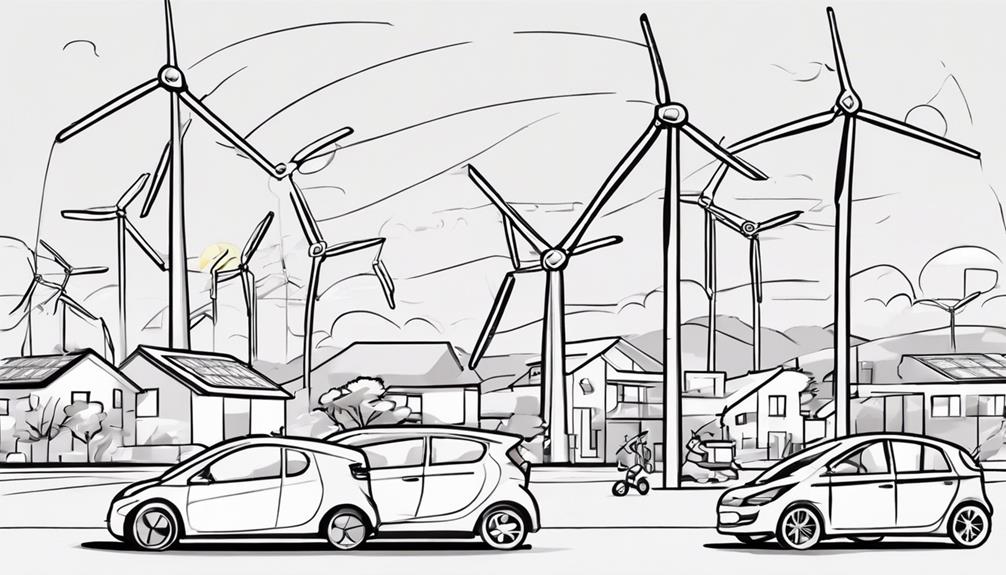
Governments worldwide implement various financial incentives and policies to encourage the utilization of renewable resources in energy production and consumption. Incentives for renewable resource use include:
- Energy tax credits and rebates for installing renewable energy systems.
- Renewable Energy Certificates (RECs) that offer financial incentives for generating renewable electricity.
- Green funds providing investments in renewable energy projects to encourage their development.
- Feed-in tariffs and grants offered by governments to promote the use of renewable resources.
These incentives aim to spur the adoption of renewable energy sources, reduce greenhouse gas emissions, and promote sustainability. By offering such incentives, governments hope to accelerate the transition towards a cleaner and more sustainable energy future. International agreements, such as the Kyoto Protocol, also play a significant role in incentivizing countries to shift away from non-renewable resources and embrace renewable energy technologies.
Examples of Renewable Resources
Among the diverse array of renewable resources contributing to the global energy landscape are solar energy, wind energy, hydropower, geothermal energy, and biomass energy. Solar energy, captured through photovoltaic cells, converts sunlight into electricity. Wind energy is harnessed by wind turbines that capture the kinetic energy of moving air, converting it into electrical power. Hydropower utilizes the force of flowing water from rivers or dams to generate electricity. Geothermal energy, on the other hand, taps into the Earth's internal heat for power production. Biomass energy is derived from organic materials, such as wood, agricultural residues, or waste, which are burned or converted into biofuels to produce heat or electricity. These renewable resources offer sustainable alternatives to traditional fossil fuels, helping to reduce greenhouse gas emissions and combat climate change while providing a reliable source of energy for a greener future.
Encouraging Renewable Resource Adoption
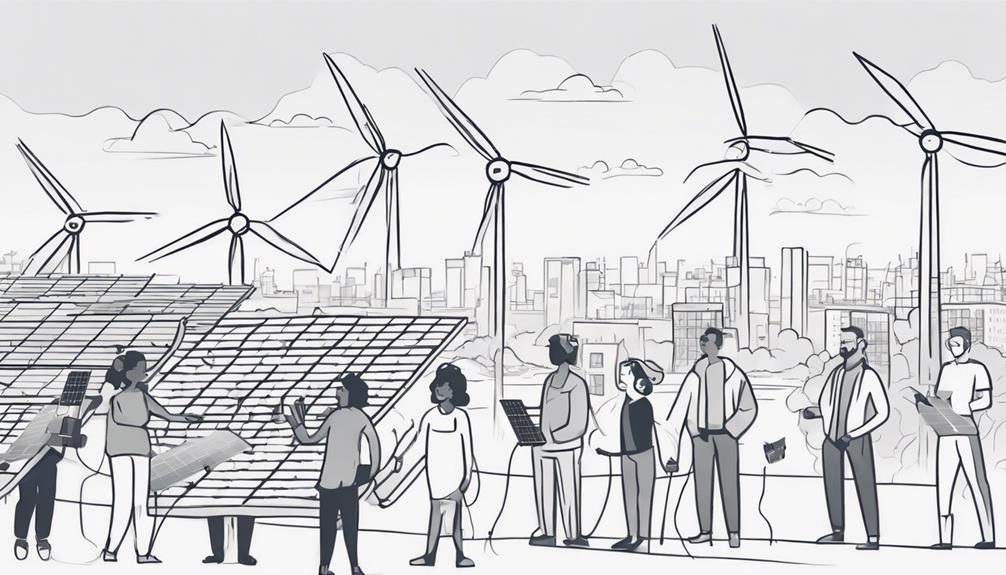
Encouraging the widespread adoption of renewable resources is imperative in transitioning towards a more sustainable and environmentally conscious energy landscape. To achieve this goal, various strategies and initiatives can be implemented:
- Government Incentives: Tax credits and rebates provided by the government serve as powerful motivators for individuals and businesses to invest in renewable energy systems.
- Educational Programs: Increasing awareness about the benefits of renewable resources through educational programs and outreach initiatives can help change attitudes and behaviors towards sustainable energy practices.
- Renewable Portfolio Standards (RPS): Mandating a specific percentage of energy generation to come from renewable sources through RPS drives the adoption of clean energy technologies on a larger scale.
- Technological Advancements: Continuous advancements in renewable energy systems enhance their efficiency and cost-effectiveness, making them more attractive options for widespread adoption.
Frequently Asked Questions
What Are 5 Examples of Renewable Resources?
Five examples of renewable resources include solar energy, wind power, hydropower, biomass, and geothermal energy. Solar energy benefits from abundant sunlight for electricity production, while wind power's efficiency stems from harnessing moving air. Hydropower has vast potential from flowing water in rivers or dams. Biomass utilizes organic materials for heat and power generation, whereas geothermal energy capitalizes on the Earth's heat for electricity and building heating.
What Are Renewable Sources?
Renewable sources encompass various natural elements like sunlight, wind, water, geothermal heat, and biomass. These resources play a vital role in enhancing energy efficiency, promoting sustainable living practices, and advancing green technology. By harnessing renewable sources, we can minimize the environmental impact of energy production and contribute to climate change adaptation efforts. Incorporating renewable sources into our energy mix is essential for a cleaner, more sustainable future.
What Are the 7 Types of Renewable Resources?
Solar energy, wind power, geothermal energy, biomass fuel, and hydroelectric power are among the seven types of renewable resources. Solar energy harnesses sunlight for electricity, wind power converts kinetic energy into power, geothermal energy uses Earth's heat, biomass fuel involves organic matter, and hydroelectric power generates electricity from flowing water. These resources offer sustainable alternatives to fossil fuels, contributing to a cleaner and more environmentally friendly energy landscape.
What Is Meant by Renewable Resource?
A renewable resource refers to a natural source that can be naturally replenished or regenerated over time. These resources play a vital role in promoting energy sustainability, providing significant environmental benefits, driving advancements in renewable technology, and reducing reliance on non-renewable energy sources. Their utilization has a positive impact on climate change by decreasing greenhouse gas emissions and contributing to a cleaner, more sustainable future.
Conclusion
In conclusion, renewable resources are essential for sustaining our energy needs in a sustainable and environmentally friendly manner. One example of successful renewable resource adoption is the city of Copenhagen, Denmark, which aims to be carbon neutral by 2025 through the use of wind power and district heating systems. By investing in renewable resources and reducing our reliance on non-renewable sources, we can create a cleaner and healthier future for generations to come.
